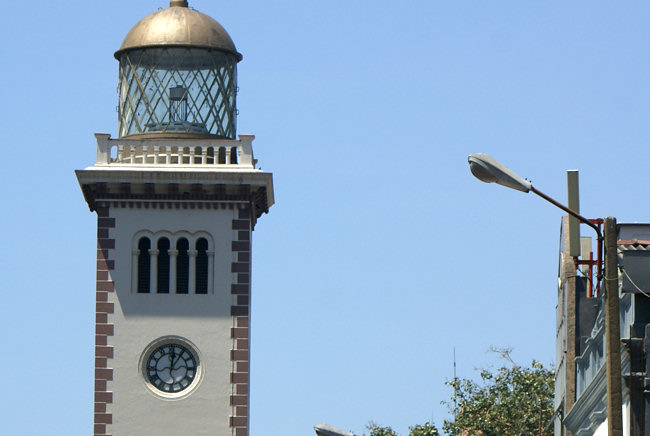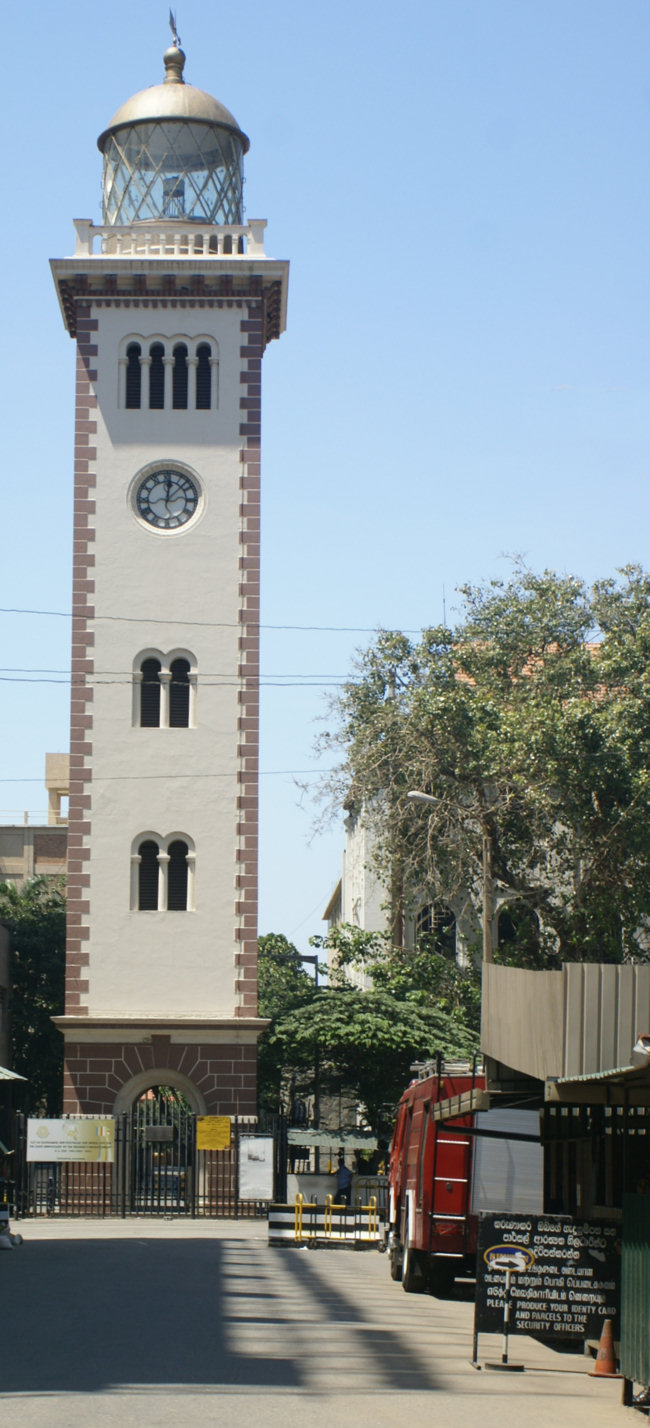Chatham Street Victorian Clock Tower
At the corner of Chatham Street and a road called Janadihipathi Mawatha(it used to be known as Queens Street) in the North West area of Colombo Fort is an elegant Victorian Clock Tower. It used to be a light house which is very evident as the light is still on the top of the tower.

Colombo Chatham Street Clock Tower & Lighthouse
Because of poor planning controls it became surrounded by new tall buildings so it eventually could not function effectively as a light-house. It became redundant. The modern Galle Buck Lighthouse was erected on Marine Drive as its replacement.
The first light was powered by kerosene oil and could be seen seventeen miles out to sea in clear weather. According to the plaque on the side of the lighthouse it displayed its beam seaward every five seconds. (Though have read elsewhere that its white revolving double light showed a triple flash lasting a second with an eighteen second wait).
On the top of the semi-globe roof is a metal arrow on a pole. It points in the direction the wind is blowing. The idea of building a lighthouse for Colombo Harbour to help shipping navigate into the harbour and miss the lethal rocks, was proposed in 1815. The lighthouse was built in 1856.
Lady Ward, wife of the Governor of Ceylon, created the elegant design. It defiantly has a feminine feel about the style. The Chatham Street light-house does not have the industrial strong robust practical look of most lighthouses. It is 132 feet above sea level.

Colombo Chatham Street Clock Tower & Lighthouse
The presidential house and gardens are nearby but they are unfortunately off limits to the public. You will find many roads in this area blocked off. It is also the home of the Sri Lankan Navy so security is very high. To get to the north of the Fort we found the best way was to go by Tuk-tuk but be prepared to negotiate hard and walk away if they will not come down on price. There is always another nearby that is prepared to do business with you.
When measuring distances from one city to another, instead of working out what is the centre of Colombo the Lighthouse Clock Tower is used as the starting point. The Chatham Street lighthouse plans always made an allowance for the positioning of a clock on the outside. This feature was added later. The clock was ordered in 1872 but not installed. It was kept in storage in a warehouse for economic reasons. It was finally put in the tower in 1914.
The clock was visible for some distance and would help local workers to be punctual as many could not afford a watch. At present you cannot climb the stairs to admire the view from the top. It over looks too many security sensitive locations. Lets hope that the this will be possible at a time in the future.
Travel books

